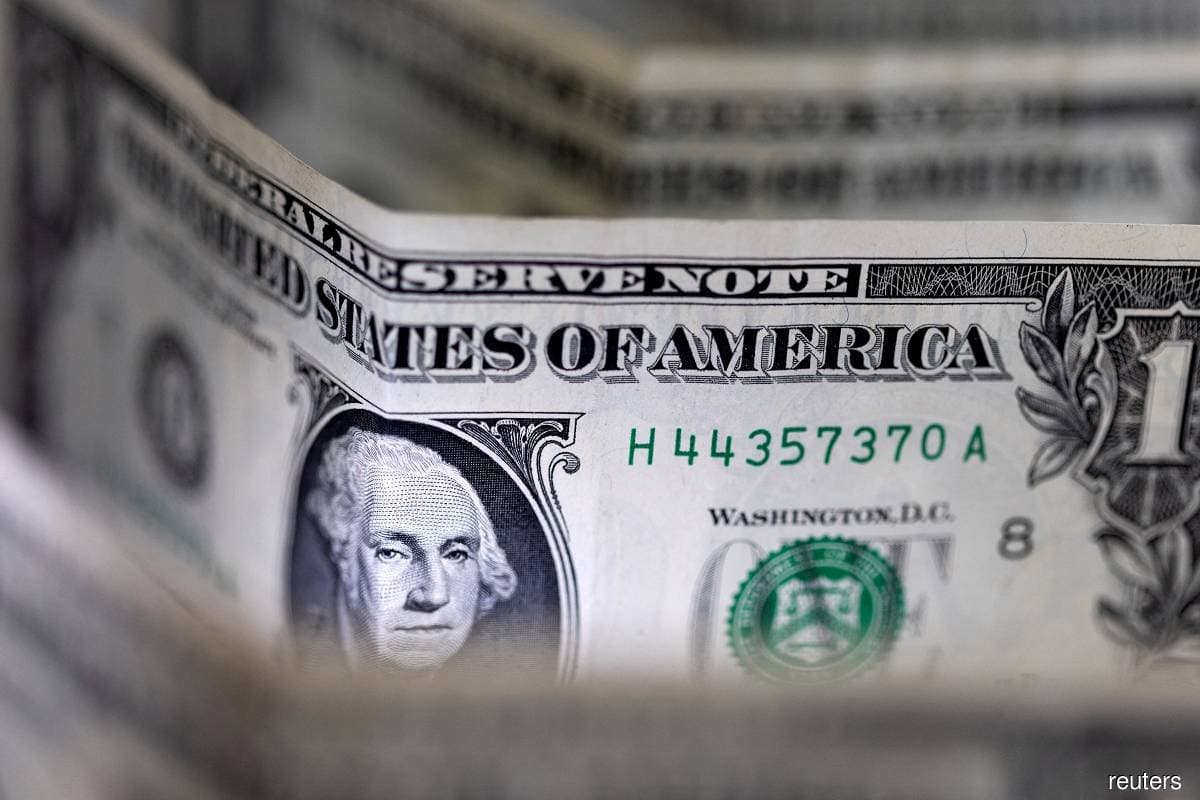
KUALA LUMPUR (Dec 13): The US dollar, which has surged against the world currencies this year, appears to have peaked as the greenback came off the highs it recorded in the third quarter of this year, according to Moody’s Analytics.
“Our view reflects the changes in expectations for a softer pace of rate hikes by the US Fed,” Moody’s Analytics senior economist Stefan Angrick told a virtual briefing on the outlook for the Asia-Pacific region in 2023.
Bloomberg data showed that the US dollar index has slipped from 114.11 on Sept 27, 2022, to 104.83 on Tuesday (Dec 13). The index is a measurement of the US dollar's strength against a basket of foreign currencies; the index goes up when the US dollar gains strength, and vice versa.
Meanwhile, Angrick named Sri Lanka, Laos and Pakistan’s currencies as the Asia Pacific currencies that have tumbled the most against the greenback over the past one year.
“The largest depreciations within the Asia Pacific are in economies like Sri Lanka, Laos and Pakistan. That's of course reflective of the fact that those economies are struggling with very deep, fundamental problems,” he noted.
Net commodity importers such as Japan, the Philippines, New Zealand and South Korea have also seen significant depreciation in their currencies, as these economies suffer when commodity prices go up, he added.
US interest rate to stay elevated in 2023
As inflation remains persistently high in the US, it is likely to result in the US continuing its interest rate hike into 2023, according to Moody’s Analytics chief APAC economist Steve Cochrane.
He is expecting the US Federal Reserve to raise another 50 basis points (bps) this week — but down from the 75bps hike done in each of the four previous sessions in June, July, September and November this year — after the Federal Open Market Committee (FOMC) concludes its December meeting, which is to be held between Dec 13 and Dec 14.
The Fed has cumulatively raised the key interest rate by six times or 3.75% this year.
“We are expecting, in the late January to early February meeting (Jan 31 to Feb 1), a 25bps hike and then another 25bps hike in March,” Cochrane added.
“That will put the federal funds rate at about just over 5% and that is what we are expecting to be the so-called terminal rate. The one thing that we are expecting is that the Fed will likely keep the federal funds rate through 2023 and even into early 2024, to be absolutely certain that inflation is on its way back towards the US Fed target rate of about 2%. They can then [shift to] easing policy with some confidence,” he said.
“Another important point to make is that we expect that once the Fed does begin easing rates, it will be a very slow process through 2024 into 2025. It may well be in late 2025 before the federal funds rate actually gets back to that neutral rate, something between 2% and 2.5%,” he concluded.